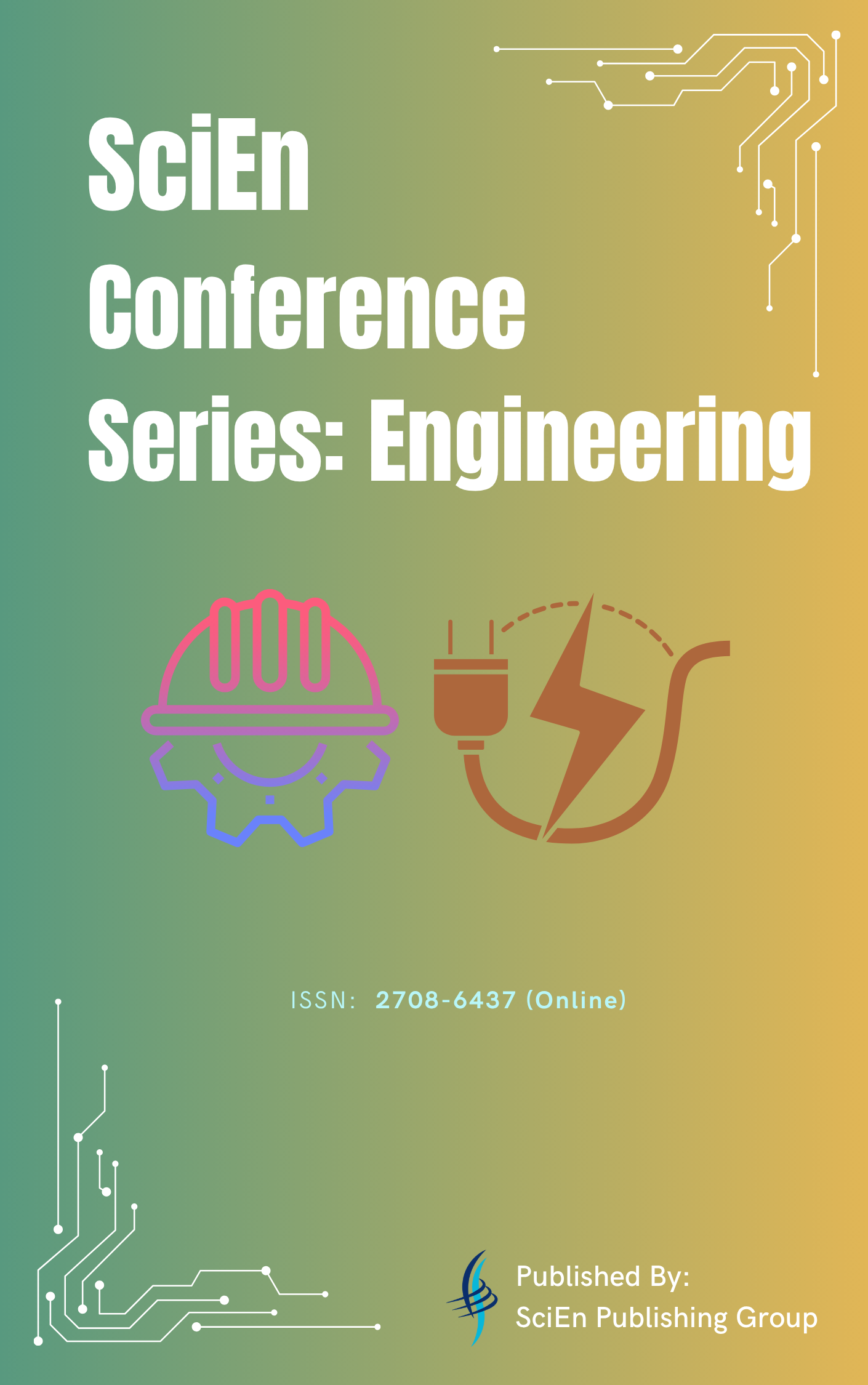Post-consumer PET Bottle Recycling: Chemical Dose Optimization
DOI:
https://doi.org/10.38032/jea.2020.03.001Keywords:
PET Bottle, Recycling, Chemical Dose, NaOH, Detergent, Colorimetric AnalysisAbstract
Polyethylene terephthalate (PET) bottles are being used in our daily life and consequently go to the landfills after their use. Additionally, virgin PET resins are produced from nonrenewable resources, such as fossil fuels, whose reserves are depleting continuously. Therefore, to maintain ecological and environmental balances as well as for sustainable development, post-consumer PET (pcrPET) bottles should be recycled. Among many recycling processes, mechanical recycling of pcrPET is attractive due to lower cost involvement. One of the most crucial and important processes of mechanical recycling is hot washing for contaminants removal. Hot washing uses a cleaning solution made of caustic soda (NaOH) and detergent at elevated temperature. In this paper, caustic soda and FORYL LFO (FLO) detergent doses were changed gradually to investigate effective contaminants removal through colorimetric study. Finally, concentration vs. absorbance graphs from colorimetric study suggests that 2% NaOH and 2% FLO detergent is the optimum chemical dose at hot washing for pcrPET recycling.
References
Bari, Q.H., Hassan, K.M. and Haque, M.E., 2012. Solid waste recycling in Rajshahi city of Bangladesh.Waste management,32(11), pp.2029-2036.
Matter, A., Ahsan, M., Marbach, M. and Zurbrügg, C., 2015. Impacts of policy and market incentives for solid waste recycling in Dhaka, Bangladesh.Waste Management,39, pp.321-328.
Mourshed, M., Masud, M.H., Rashid, F. and Joardder, M.U.H., 2017. Towards the effective plastic waste management in Bangladesh: a review.Environmental Science and Pollution Research,24(35), pp.27021-27046.
Rahman, S.M., Shams, S. and Mahmud, K., 2010. Study of solid waste management and its impact on climate change: a case study of Dhaka City in Bangladesh. InProceedings of International Conference on Environmental Aspects of Bangladesh (ICEAB), September 4, 2010, University of Kitakyushu, Kitakyushu, Japan(pp. 229-231).
Hasan, M.M., , in: C.R.M. Industry & Equity Analysis Team, IDLC Finance Limited (Ed.) MONTHLY BUSINESS REVIEW, IDLC Finance Limited, Dhaka 1212, 2015, pp. 2-15.
U. Nations, U.N. Economic, S.C.f. Asia, t.P. Trade, I. Division, Enabling Environment for the Successful Integration of Small and Medium-sized Enterprises in Global Value Chains: Country Studies of Bangladesh, Nepal and Sri Lanka, United Nations ESCAP2012.
Afroz, R., Hanaki, K. and Tudin, R., 2011. Factors affecting waste generation: a study in a waste management program in Dhaka City, Bangladesh.Environmental monitoring and assessment,179(1-4), pp.509-519.
Awaja, F. and Pavel, D., 2005. Recycling of PET.European Polymer Journal,41(7), pp.1453-1477.
Karayannidis, G.P., Nikolaidis, A.K., Sideridou, I.D., Bikiaris, D.N. and Achilias, D.S., 2006. Chemical recycling of PET by glycolysis: polymerization and characterization of the dimethacrylated glycolysate.Macromolecular Materials and Engineering,291(11), pp.1338-1347.
Malik, N., Kumar, P., Shrivastava, S. and Ghosh, S.B., 2017. An overview on PET waste recycling for application in packaging.International Journal of Plastics Technology,21(1), pp.1-24.
Nikles, D.E. and Farahat, M.S., 2005. New motivation for the depolymerization products derived from poly (ethylene terephthalate)(PET) waste: A review.Macromolecular Materials and Engineering,290(1), pp.13-30.
T.W.M. Organization, Best Practices in PET Recycling Clear PET, Clean Flake Specifications for Fiber, Bottles, Film and Sheet, Strapping, Engineered Resins, and Depolymerization, 1998.
Park, S.H. and Kim, S.H., 2014. Poly (ethylene terephthalate) recycling for high value added textiles.Fashion and Textiles,1(1), pp.1-17.
Welle, F., 2011. Twenty years of PET bottle to bottle recycling—an overview.Resources, Conservation and Recycling,55(11), pp.865-875.
Yousuf, T.B. and Rahman, M., 2007. Monitoring quantity and characteristics of municipal solid wastein Dhaka City.Environmental monitoring and assessment,135(1-3), pp.3-11.
Sinha, V., Patel, M.R. and Patel, J.V., 2010. PET waste management by chemical recycling: a review.Journal of Polymers and the Environment,18(1), pp.8-25.
Romão, W., Franco, M.F., Bueno, M.I.M. and De Paoli, M.A., 2010. Distinguishing between virgin and post-consumption bottle-grade poly (ethylene terephthalate) using thermal properties.Polymer testing,29(7), pp.879-885.
Mancini, S.D., Schwartzman, J.A.S., Nogueira, A.R., Kagohara, D.A. and Zanin, M., 2010. Additional steps in mechanical recyling of PET.Journal of Cleaner Production,18(1), pp.92-100.
Koo, H.J., Chang, G.S., Kim, S.H., Hahm, W.G. and Park, S.Y., 2013. Effects of recycling processes on physical, mechanical and degradation properties of PET yarns.Fibers and Polymers,14(12), pp.2083-2087.
E.-. recycling, Technical specifications: pet flakes –quality specification, Poland, 2020. https://ergis-recycling.eu/en/content/PET-Polyethylene-terephthalate/technical-specifications[Accessed 06 September 2012]
M.R. Technology, PET Specification: Clear PET flakes, United Kingdom, 2020.http://marsrecyclingtechnology.co.uk/home/pet-specification/[Accessed 06 September 2012]
G.I. Limited, PET Bottle Flakes: Recycled PET Flakes, India, 2020. https://www.gravitaindia.com/pet-bottle-flakes/ [Accessed 06 September 2012]
Welle, F., 2016. Investigation into cross-contamination during cleaning efficiency testing in PET recycling.Resources, Conservation and Recycling,112, pp.65-72.
Welle, F., 2011. Twenty years of PET bottle to bottle recycling—an overview.Resources, Conservation and Recycling,55(11), pp.865-875.
Zhu, B., Liu, J., Pan, R., Wang, S. and Gao, W., 2015. Fabric seam detection based on wavelet transform and CIELAB color space: A comparison.Optik,126(24), pp.5650-5655.
Hossain, M.S. and Mozumder, S.I., 2018. Post consumer polyethylene terephthalate (PET) recycling in bangladesh through optimization of hot washing parameters.American Scientific Research Journal for Engineering, Technology, and Sciences (ASRJETS),40(1), pp.62-76.
Downloads
Published
Issue
Section
License
Copyright (c) 2020 Md. Shahadat Hossain, Md Anisur Rahman

This work is licensed under a Creative Commons Attribution-NonCommercial 4.0 International License.
All the articles published by this journal are licensed under a Creative Commons Attribution-NonCommercial 4.0 International License

